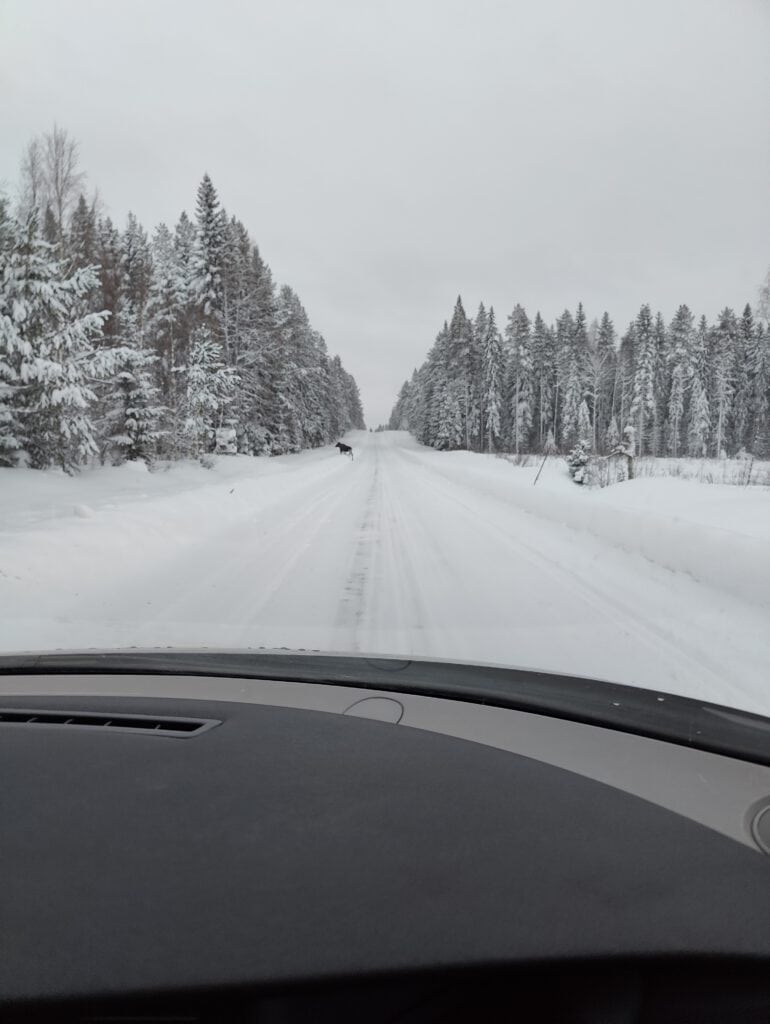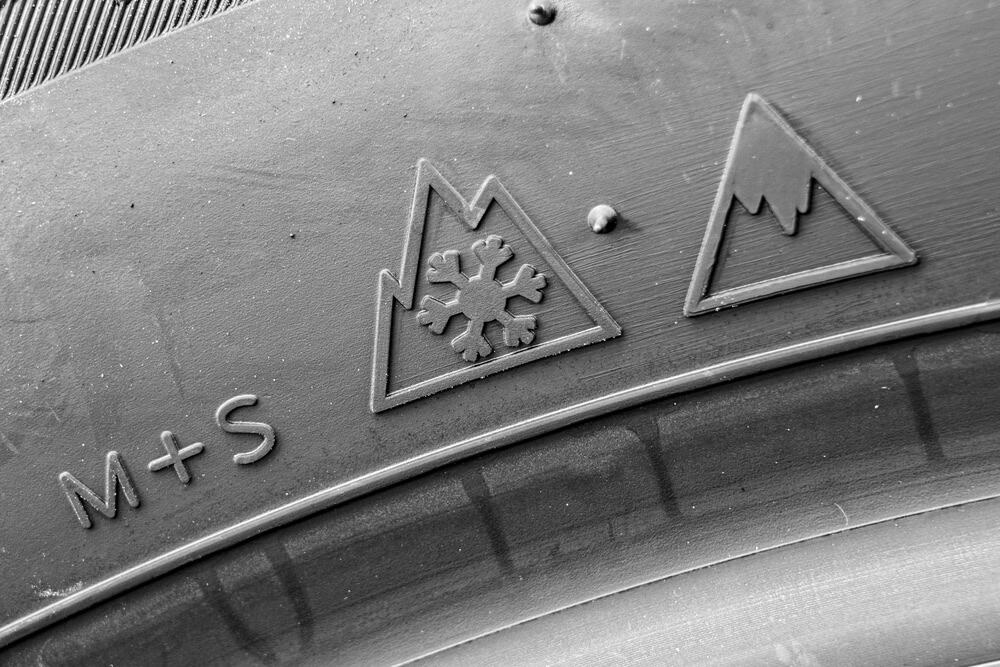During the winter the landscape of Lappand becomes a wonderland covered in a blanket of snow, This creates the scenes in the forests and the fields that make your Lapland experience something that stays in the memory for years to come.
As a part of your visit you may find yourself driving a car. Just as the trees and fields are covered with snow, so too is the road. But fear not. This is your guide to everything you need to know about driving safely through the roads of Lapland.
There are several elements to this topic and we will take them one by one. First of all you have the car itself and the equipment you will have available to you. Then comes the winter tyres and the different options you have. Last but not least we have the driving style. How you should adapt your driving to the conditions. This can vary depending on the type of snow or road conditions but there are some basic tips that are essential no matter what the conditions are.

The Car
Assuming that you are hiring a car and not driving all the way to Lapland you will be getting a car that has been adapted to the cold climates so as standard you should have these things ready to go on the car you’re driving so you do not need to add then to your packing list.
Shovel: You are never planning to become snowed in but having a shovel in the car for removing snow is a very useful thing. It can be that you have parked the car and while your away from it a lot of snow has fallen. On you return you may find that the car is buried beneath the snow and having the tools at hand to dig around the car and a pathway out the parking space will save you time, stress and the potential of getting stuck.
Rope: Once again it is not something you are adding to you list of activities while in Lapland but there is a chance you will need a toe out of the snow. A toe rope is therefore a good precaution to haven. From personal experience if you find yourself in a snow bank and the car is leaning downwards you will need a tractor to pull you out. Another car will not have the power to pull you out.
Warm clothes: You may already have some warm clothes with you depending on your journey but if not you should always have a set of warm woolen socks, a jumper, warm boots and a warm coat with you in the car. Just in case you need to either wait in or beside the car (maybe you have a breakdown of some kind) or you need to walk a distance from the car to a petrol station for example. If the temperatures are in the minus you will soom start to feel the cold if you do not have the appropriate clothing.
Engine warmer/Diesel warmer: Due to the extreme cold conditions (below -10) the car will be fitted with an engine warmer and/or a diesel warmer.
The engine warmer is an electrical element that is mounted to you engine block. When plugged in using a special cable it will slowly warm up your engine so the oil and fluids are at a better temperature when you start the car. This system also includes an electrical socket usually placed in the passenger footwell that can be used to run a cabin heater, Put the warner on around 2 hours before you need to use the car and when you come to it it will be toasty inside and out. The cable will be provided and the socket is usually mounted somewhere on the front of the car, It will be a small black flip up cover. It plugs into a nornal mains socket. You should have an outside socket at your rented accommodation and sometimes there are outlets in the car parks, They look like letter boxes on a post in front of each space.
A diesel warmer does exactly the same thing but uses the diesel in the car to warm the fluids and the cabin of the car. It will have a timer function somewhere so you can set it to come on. These systems need around 30 minutes to warm the car before use and use a small amount of your fuel so make sure you dont have a low fule level if your using it.
Tyres: The car you drive will be fitted with winter tyres and there are two types. Standard winter tyres and studded tyres, As long as they have the three peaks symbol on the tyre they will be good but for icy conditions the studs are a preferred option and are pretty standard in this region. There is not much to say about thenm other than to avoiding large wheelspins as this can tear the studs out the tyre. If you do drive on bare asphalt with studs they do make a bit more road noise than standard tyres so that’s something to keep in mind if you think there is something wrong.

Driving Style: When you first drive on snow you may imagine that you will slide straight off the road at the first bend but the winter tyres do offer a good amount of grip. That said, you should adapt your driving to something like driving in torrencal rain, steering with smooth movements and braking slowly. Erratic steering and heavy breaking will induce sliding.
If the road is covered in fresh snow try to keep to the tracks already made. Sometimes a small groove can form and the car might slip a little if you fall out of the groove. Here it is important to once again keep the steering smooth and steady.
If you find you are in deeper snow do not hit the gas. This will only spin the wheels and bury you deeper in the snow. Keep it smooth and steady and let the tyres do the work.
Tips and tricks: When the car is parked, lift the wipes up away from the windscreen. When you have been driving the windscreen is warm and them once it starts to cool down the condensation will freeze the wiper blades to the car. You may want to use the wipers the next time you get in the car and not have to wait for them to defrost first.
If it is snowing and you park the car run up and down you parking spot and a little bit in front a few times to create compact snow. This will give your tyres some grip when you pull away amd is especially good if you have had to dig around the car a little first or your on a slight slope.
When there is loose snow it can get inside your rims and freeze into hard clumps. This may then start to shake the car at higher speeds as it is effectively new wheel weights. If you feel this sensation and it can be quite powerful just take your snow scrapper or a hard stick and knock all the snow out of your wheels.